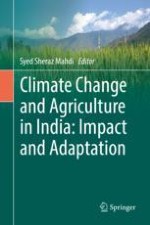2019 | OriginalPaper | Buchkapitel
12. Tackling Climate Change: A Breeder’s Perspective
verfasst von : P. K. Singh, R. S. Singh
Erschienen in: Climate Change and Agriculture in India: Impact and Adaptation
Aktivieren Sie unsere intelligente Suche, um passende Fachinhalte oder Patente zu finden.
Wählen Sie Textabschnitte aus um mit Künstlicher Intelligenz passenden Patente zu finden. powered by
Markieren Sie Textabschnitte, um KI-gestützt weitere passende Inhalte zu finden. powered by
